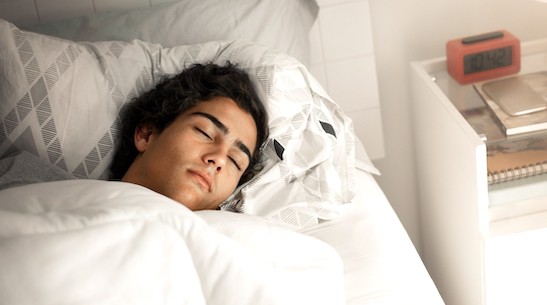Report: Students lacking adequate nightly sleep face higher risk for physical and mental health problems
The numbers are eye-opening and revealing when it comes to the amount of time most students spend with their eyes closed. According to the federal U.S. Centers for Disease Control and Prevention (CDC), most students who attend Grades 6–12 are not getting enough sleep and the problem is getting worse. Being sleep-deprived in these age categories is especially damaging to short- and long-term overall health and could put these preteens and adolescents at much higher risk for illnesses and mental health issues.
How much sleep someone needs depends on their age. The American Academy of Sleep Medicine has recommended that children aged 6–12 years should regularly sleep 9–12 hours per 24 hours and teenagers aged 13–18 years should sleep 8–10 hours per 24 hours. The recommendation apparently is not being followed by a majority of teens and preteens in middle and high school years.
The CDC tracks sleep habits in a variety of ways, primarily from results of the Youth Risk Behavior Survey (YRBS), which is traditionally administered to high schools each spring, traditionally in March.
Malden High School ninth-graders also participate in the national Screening, Brief Intervention, and Referral to Treatment (SBIRT) survey. SBIRT is a comprehensive, integrated, public health approach to the delivery of early intervention and treatment services for persons with substance use disorders, as well as those who are at risk of developing these disorders. Primary care centers, hospital emergency rooms, trauma centers, and other community settings provide opportunities for early intervention with at-risk substance users before more severe consequences occur. Malden High School ninth-graders were administered the SBIRT Testing in school last week.
Here are the latest findings from the CDC:
—Among middle school students, 57.8% reported insufficient sleep (fewer than the recommended 9–11 hours each 24-hour period), with nearly 12% reporting sleeping fewer than 6 hours a night.
—Among high school students, 72.7% reported insufficient sleep, with about 20% reporting sleeping fewer than 6 hours a night.
—In both groups studied, females fared worse than males, with 59.6% of middle school females and 75.6% of high school females reporting insufficient sleep, compared with 56% of middle school males and 69.9% of high school males.
—The percentage of high school students who reported getting sufficient sleep dropped from 30.9% to 27.3% between 2015 and 2018 (2015 was the first year the YRBS was administered to middle school children).
—Among states, Connecticut recorded the highest prevalence of high school students reporting insufficient sleep, at 80.1%. Massachusetts high school students reporting less than 8 hours sleep was ranked the 20th highest in the United States at 78.7%. At the middle school level, the highest prevalence was recorded in Kentucky, at 64.7%.
—Boston high school–aged students reported the highest percentage of insufficient sleep with 84% reporting not getting 8 or more hours of sleep nightly.
In assisting caregivers in coming up with ways to help students get enough sleep, the CDC advises the following strategies:
—Stick to a consistent sleep schedule during the school week and weekends. This means going to bed at the same time each night and getting up at the same time each morning.
—Adolescents whose parents set bedtimes are more likely to get enough sleep.
—Limit light exposure and technology use in the evenings.
—Parents can limit when their children may use electronic devices – referred to as a “media curfew.”
With regard to teen and adolescent sleep during the height of the COVID-19 pandemic in 2020 and 2021, studies showed the following:
—While poor sleep was linked to higher levels of stress during the COVID-19 pandemic, more teens actually obtained the recommended amount of sleep compared to pre-pandemic sleep patterns, according to a new study from McGill University.
—Changes to daily routines triggered by lockdowns allowed teenagers to follow a biological impulse to wake up and sleep later, reducing daytime sleepiness.




